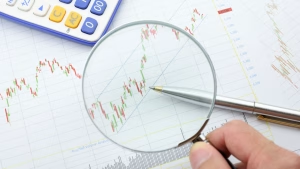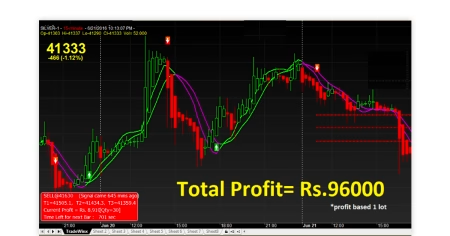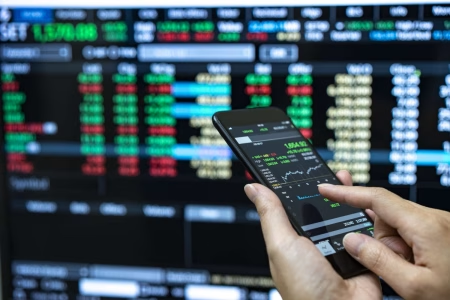Traders in the forex market rely on fundamental analysis to evaluate the economic conditions that affect a currency’s value. Economic indicators, such as GDP, CPI, and retail sales, provide valuable information about a country’s economic health. These indicators, along with market sentiment analysis, are essential for gaining key insights into the market.
Key Takeaways:
- Forex fundamental analysis is crucial for evaluating economic conditions in the currency market.
- Economic indicators like GDP, CPI, and retail sales provide valuable information for informed trading decisions.
- Market sentiment analysis complements economic indicators in understanding the overall market dynamics.
- Combining fundamental analysis with technical analysis enhances trading strategies and improves outcomes.
- Staying informed and up-to-date with economic news and trends is vital for successful forex trading.
Economic Indicators in Forex Fundamental Analysis
Economic indicators play a vital role in forex fundamental analysis. These reports provide valuable insights into a country’s economic performance, helping traders predict currency price movements and volume trends. By understanding and interpreting economic indicators, traders can develop effective fundamental analysis strategies.
Types of Economic Indicators
There are various types of economic indicators that forex traders closely monitor. Some of the key indicators include:
- Gross Domestic Product (GDP)
- Consumer Price Index (CPI)
- Retail Sales
- Industrial Production
- Unemployment Rate
Currency Price Drivers
Economic indicators serve as important currency price drivers. Positive or negative changes in these indicators can significantly impact a country’s currency value. For example, a higher GDP growth rate may strengthen a currency, while weak retail sales might lead to currency depreciation.
Traders often analyze the relationship between economic indicators and currency prices to identify potential trading opportunities. By understanding what drives currency values, traders can make informed decisions based on fundamental analysis.
Fundamental Analysis Strategies
Forex traders use a range of fundamental analysis strategies to interpret economic indicators and make trading decisions. These strategies involve studying the impact of economic indicators on currency prices and identifying trends and patterns that can predict future movements.
“Fundamental analysis provides a comprehensive view of the forex market by considering economic factors that can influence currency prices.”
Some common fundamental analysis strategies include:
- News Trading: Traders capitalize on market volatility triggered by significant economic events or news releases.
- Trend Analysis: Traders identify long-term trends based on economic indicators to determine the direction of currency prices.
- Correlation Analysis: Traders analyze the relationship between economic indicators and specific currency pairs to predict future price movements.
By incorporating fundamental analysis strategies into their trading approach, forex traders can gain a deeper understanding of the market and enhance their trading outcomes.
Economic indicators are indispensable tools for forex traders, as they provide crucial information about a country’s economic health and its impact on currency markets. By studying these indicators and implementing effective fundamental analysis strategies, traders can make informed trading decisions and navigate the forex market with confidence.
GDP and Its Impact on Currency Movements
Gross Domestic Product (GDP) serves as the broadest measure of a country’s economy, encapsulating the total value of all goods and services produced within a specified period. As an essential tool for fundamental analysis, GDP reflects a country’s economic growth and holds significant influence over currency movements.
Traders keenly focus on both the advance and preliminary reports of GDP, as revisions between these reports can trigger volatility in the currency market. These revisions are often accompanied by market reactions, presenting opportunities for astute traders to capitalize on currency fluctuations.
“GDP is a fundamental analysis tool that provides insights into a nation’s economic health, helping traders gauge the strength of its economic performance. By monitoring GDP reports, traders can make informed decisions and adjust their strategies accordingly.”
Moreover, GDP plays a pivotal role in shaping market sentiment, affecting investor confidence and expectations. A strong GDP figure typically signals robust economic growth and may bolster a currency’s value. Conversely, a weak GDP reading may undermine confidence and lead to currency depreciation.
Understanding the intricacies of GDP and its impact on currency movements is crucial for traders employing fundamental analysis. By monitoring GDP reports and considering their implications within the broader economic context, traders can gain valuable insights and enhance their decision-making process.
Key GDP Indicators
| GDP Indicator | Description |
|---|---|
| Gross Domestic Product (GDP) | The total value of goods and services produced within a country |
| Advance Report | An early estimate of GDP, subject to revisions |
| Preliminary Report | A more comprehensive revised estimate of GDP |
Source: Own elaboration based on economic data.
It is essential for traders to incorporate GDP analysis into their fundamental toolkit, combining it with other economic indicators and market research. By harnessing the power of GDP and applying fundamental analysis tools, traders can gain a comprehensive understanding of the market dynamics driving currency movements.
Retail Sales and Consumer Spending Patterns
The retail sales report is a significant economic indicator that provides insights into consumer spending patterns. It measures the total receipts of all retail stores in a country, offering valuable information about the health of its economy. By analyzing the retail sales report, traders can gauge consumer sentiment and anticipate potential changes in currency markets.
Revisions to the advanced reports of retail sales are of particular interest to traders. Any changes in the data can lead to volatility in currency markets, creating opportunities for profit. Therefore, keeping a close eye on revisions and understanding the impact they may have on currency movements is crucial for informed trading decisions.
The Importance of Consumer Price Index (CPI)
The Consumer Price Index (CPI) is a vital economic indicator closely related to retail sales and consumer spending. It measures changes in the average prices of a basket of goods and services commonly consumed by households. Traders track the CPI as it reflects inflationary pressures and purchasing power, providing valuable insights into a nation’s economic stability.
The CPI is used by central banks and policymakers to set monetary policies, manage inflation, and ensure price stability. In forex trading, changes in the CPI can impact currency prices and guide trading strategies. By incorporating the CPI into their analysis, traders can make more informed decisions based on the current economic conditions of a country.
Retail Sales Report Statistics
| Year | Total Retail Sales (in billions) |
|---|---|
| 2017 | 5,236 |
| 2018 | 5,461 |
| 2019 | 5,768 |
| 2020 | 4,894 |
| 2021 | 5,239 |
The table above showcases the total retail sales statistics for the past five years. It demonstrates the trends in consumer spending, providing a historical perspective on the growth or decline of retail sales. Traders can use this information to assess economic stability and potentially anticipate future currency movements.
“The retail sales report is a powerful tool that can help traders analyze consumer spending patterns and make informed trading decisions.”
By monitoring the retail sales report and its revisions, analyzing the Consumer Price Index (CPI), and considering other economic indicators, traders can gain a comprehensive understanding of consumer behavior and its impact on currency markets.
Industrial Production and Capacity Utilization
Understanding the industrial production report and capacity utilization is crucial for forex traders, as it provides insights into the production levels of factories, mines, and utilities within a nation. This information can have a significant impact on a country’s currency value and trading decisions.
The industrial production report measures the changes in the output of various sectors. It includes data on manufacturing, mining, and utility production. Traders closely monitor utility production, as it can be particularly volatile, especially when influenced by unexpected weather events. Severe weather conditions, such as hurricanes or heatwaves, can disrupt utility production, leading to revisions between reports and potentially causing fluctuations in currency values.
Capacity utilization is another critical aspect to consider when analyzing industrial production. It measures the extent to which factories, mines, and utilities are actually operating at their full productive potential. High capacity utilization levels suggest that the economy is performing well, creating favorable conditions for a country’s currency to strengthen.
Here is an example of a table showing the recent industrial production report for a specific country:
| Year | Industrial Production Growth Rate (%) |
|---|---|
| 2018 | 3.5 |
| 2019 | 2.1 |
| 2020 | -1.2 |
| 2021 | 4.7 |
Note: The values in the table are for illustrative purposes only and do not represent real data. They are provided to demonstrate how the table may be structured.
By analyzing the industrial production report and capacity utilization, traders can gain valuable insights into a country’s economic performance and potential currency movements. It is essential to stay informed about these factors and their potential impact on forex trading strategies.
Impact of Economic Events on Currency Prices
Economic events play a significant role in shaping currency prices. Traders closely monitor economic calendar events, such as interest rate decisions, GDP announcements, and other key indicators, as they can directly influence the foreign exchange market. Understanding the impact of these events is crucial for both fundamental and technical analysis strategies.
When major economic events take place, they often create substantial volatility in currency prices. Traders use economic calendars to stay informed about upcoming events and market expectations, allowing them to anticipate potential price movements and adjust their trading strategies accordingly. Market expectations are a key consideration in evaluating how economic events might impact currency prices.
Fundamental analysis focuses on the underlying economic factors that influence currency values. Traders who use this approach assess economic events and their potential impact on the market. By analyzing economic indicators and understanding how they align with market expectations, fundamental analysts can identify trading opportunities and make informed trading decisions.
In contrast, technical analysis relies on historical price patterns and market data to predict future price movements. While technical analysts may not directly incorporate economic events into their analysis, they are still aware of them and understand the potential impact on the market. Technical analysis can help traders determine optimal entry and exit points, allowing them to capitalize on price fluctuations resulting from economic events.
To illustrate the impact of economic events on currency prices, consider the following example:
Following a central bank’s interest rate decision to increase rates, the market expects the country’s currency to strengthen. Traders who conducted fundamental analysis by analyzing economic indicators and market expectations anticipate this potential price movement. As a result, they may go long on the currency pairs associated with that particular country, benefiting from the expected appreciation.
Economic events are essential catalysts that can significantly impact currency prices. Traders employing both fundamental and technical analysis need to stay up-to-date with economic calendar events and market expectations to make informed trading decisions. By understanding how these events shape the market, traders can strategically position themselves for potential profitable opportunities.
| Economic Event | Impact on Currency Prices |
|---|---|
| Interest Rate Decisions | Can cause significant volatility, with higher rates often strengthening a currency and lower rates potentially weakening it. |
| GDP Announcements | A positive GDP report can boost confidence, leading to currency appreciation, while a negative report may lead to depreciation. |
| Inflation Indicators (CPI) | Higher inflation may lead to a currency’s depreciation, as it reduces the purchasing power, while lower inflation can strengthen a currency. |
Risks of Forex Trading
Forex trading carries risks that are unique to the market. Traders are exposed to currency risk when the value of a foreign currency changes. Additionally, forex markets offer high leverage, which can lead to significant losses if the markets move against a trader. It is crucial for traders to understand and manage these risks.
“The risks involved in forex trading should not be underestimated. Traders need to be aware of the potential impact of currency fluctuations and the implications of high leverage.”
The Currency Risk
Currency risk is one of the primary risks in forex trading. As the value of currencies fluctuates, traders can experience both gains and losses. Market factors such as economic conditions, political events, and investor sentiments can influence currency prices. Traders need to keep a close eye on these factors and be prepared for potential volatility in the currency market.
Managing currency risk involves comprehensive analysis and understanding of the factors that drive currency movements. Fundamental analysis can help traders assess economic indicators and make informed predictions about currency behavior. Technical analysis can provide additional insights through chart patterns and historical price data.
The High Leverage Challenge
Forex markets offer high leverage, which enables traders to control larger positions with relatively small amounts of capital. While leverage can magnify profits, it can also amplify losses. Traders must exercise caution and employ risk management strategies when using high leverage.
Risk management is vital to mitigate the impact of high leverage. Traders should establish clear risk tolerance levels and set appropriate stop-loss orders to limit potential losses. Additionally, diversified portfolios, proper position sizing, and disciplined trading practices can help traders navigate the challenges of high leverage and maintain long-term success.
How Forex Traders Make Money
Forex traders profit by leveraging their understanding of currency pairs and capitalizing on the fluctuations in their values. There are two primary ways in which forex traders make money: through currency appreciation and interest rate differentials.
When traders expect a particular currency to increase in value relative to another currency, they can buy the first currency and sell the second currency. If the anticipated appreciation occurs, traders can sell the first currency at a higher exchange rate to realize a profit.
Conversely, traders can profit from currency depreciation by selling a currency they believe will decrease in value and then buying it back at a lower exchange rate. By correctly predicting the direction of currency movements, forex traders can generate profits.
Interest rate differentials also present opportunities for traders to make money. Central bank decisions regarding interest rates can significantly impact currency values. When a country’s central bank raises interest rates, the value of its currency may appreciate as investors seek higher returns. Traders can capitalize on this by buying the currency before the interest rate increase and selling it afterward to realize a profit.
On the other hand, when a country’s interest rates are cut, the value of its currency may depreciate as investors look for higher returns elsewhere. Traders can take advantage of this situation by selling the currency before the interest rate cut and buying it back at a lower exchange rate.
Overall, forex traders closely monitor currency pairs, economic indicators, and central bank decisions to identify profitable opportunities. By combining their analysis of currency appreciation and interest rate differentials, traders can make informed trading decisions and strive for financial success in the forex market.
| Currency Appreciation | Interest Rate Differentials |
|---|---|
| – Profiting from currency appreciation | – Capitalizing on interest rate increases |
| – Selling currency before depreciation | – Buying currency before interest rate cuts |
| – Buying currency at lower exchange rate | – Selling currency at higher exchange rate |
Fundamental Analysis Tools and Strategies
In the world of forex trading, fundamental analysis is a crucial tool for understanding market trends, evaluating economic data, and making informed trading decisions. Traders rely on a variety of fundamental analysis tools and strategies to gather relevant information and gain insights into market movements.
One fundamental analysis tool that traders utilize is an economic calendar. This calendar provides a schedule of upcoming economic events, such as GDP releases, central bank meetings, and employment reports. By staying up-to-date with these events, traders can anticipate potential market volatility and adjust their trading strategies accordingly.
Financial news sources are another valuable resource for fundamental analysis. Traders regularly follow news outlets that cover economic developments, policy changes, and market trends. By staying informed, traders can identify potential opportunities and risks that may impact currency movements.
Data analysis techniques are also essential for fundamental analysis. Traders analyze economic data, such as GDP growth, inflation rates, and retail sales, to evaluate a country’s economic health. By identifying trends and patterns in the data, traders can make informed predictions about currency movements.
Market research plays a significant role in fundamental analysis. Traders gather information about various sectors, industry performance, and geopolitical events to understand the broader market context. This research helps traders assess the potential impact of these factors on currency values and adjust their trading strategies accordingly.
Combining fundamental analysis with other forms of analysis, such as technical analysis, can provide traders with a comprehensive understanding of the market. While fundamental analysis focuses on economic data and market research, technical analysis examines historical price patterns and indicators to identify potential entry and exit points.
Benefits of Fundamental Analysis Tools and Strategies
Using fundamental analysis tools and strategies can offer several advantages to forex traders:
- Informed trading decisions: By analyzing economic data and market trends, traders can make educated decisions when entering or exiting trades.
- Long-term perspective: Fundamental analysis helps traders assess the long-term prospects of a currency, giving them insights beyond short-term price movements.
- Understanding market sentiment: Fundamental analysis allows traders to gauge market sentiment by evaluating the impact of economic events on currency prices.
- Identifying trading opportunities: By staying informed about economic news and data, traders can identify potential trading opportunities that align with their trading strategies.
Overall, fundamental analysis tools and strategies are essential for forex traders looking to gain a deeper understanding of the market. By utilizing economic calendars, financial news sources, data analysis techniques, and conducting thorough market research, traders can make informed trading decisions and increase their chances of success.
Conclusion: Mastering Forex Fundamental Analysis
Forex fundamental analysis is a crucial component of successful trading in the dynamic world of currency markets. By diligently studying economic indicators, analyzing relevant data, and staying well-informed, traders can make informed trading decisions that can significantly impact their profitability.
However, to maximize their trading strategies and outcomes, traders should consider combining fundamental analysis with technical analysis. While fundamental analysis provides insights into the underlying economic factors influencing currency movements, technical analysis helps to identify optimal entry and exit points based on price charts and patterns.
By integrating both fundamental and technical analysis, traders can create a well-rounded approach that leverages the strengths of each method. This combination allows traders to gain a comprehensive understanding of the market, identify potential trading opportunities, and make informed decisions that align with their trading goals and risk tolerance.
Ultimately, mastering forex fundamental analysis requires continuous learning, adaptation, and practice. As traders delve deeper into the world of economic indicators, refine their analytical skills, and stay updated on market trends, they can unlock the potential for more informed and profitable trading strategies.








